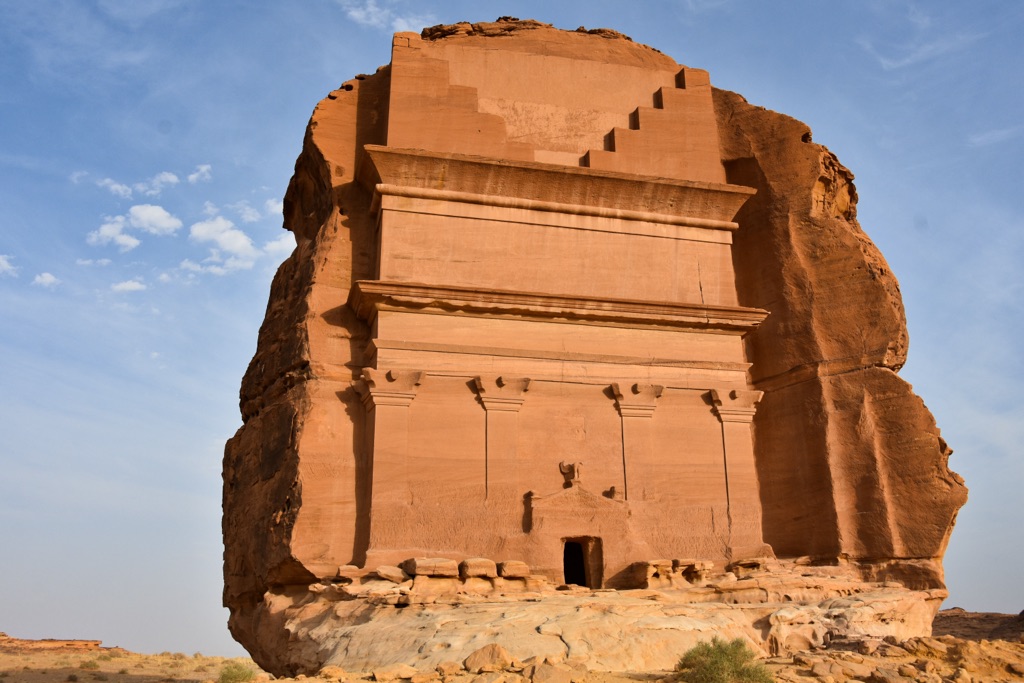The Archaeological Site of Hegra: A Window into the Nabatean Kingdom
Hegra, also known as Al-Hijr or Mada’in Salih, is an archaeological site of significant historical importance located in the Hejaz region of Saudi Arabia, within the Medina Province. This site, primarily dating from the 1st century AD, was a pivotal city in the Nabatean Kingdom, second only to Petra, the capital city located in present-day Jordan. Hegra not only showcases the architectural and agricultural advancements of the Nabateans but also serves as a testament to the diverse cultural and commercial interactions that took place in this region.
Get your dose of History via Email
Location and Environmental Setting
Hegra is situated approximately 20 km north of Al-‘Ula, lying at a strategic location that once connected various trade routes. The site is characterized by its arid environment, with the settlement built around an oasis, crucial for its agriculture. The preservation of Hegra has been remarkably aided by the dry climate, lack of resettlement post-abandonment, and local beliefs, offering a comprehensive view of the Nabatean lifestyle and their architectural prowess.

Historical Overview
Name and Early Occupations
The site has been known by several names throughout history, with Hegra being used by Mediterranean writers and Al-Hijr by Muslims, referring to the prophet Salih’s connection to the area. The presence of Lihyanite and Roman occupations before and after the Nabatean rule, respectively, indicates the site’s long history of human settlement and its importance as a commercial and religious center.
Nabatean Era
Under the rule of King Aretas IV (9 BC – 40 AD), Hegra flourished as the Nabatean Kingdom’s second capital. The Nabateans were renowned for their rock-cut architecture, and Hegra is no exception, with over 131 monumental tombs carved into the sandstone outcroppings. These tombs, along with the city’s oasis agriculture, highlight the Nabateans’ ingenuity in adapting to the harsh desert environment.
Roman Annexation
In 106 AD, the Nabatean Kingdom was annexed by the Roman Empire, marking the beginning of Hegra’s decline. The shift in trade routes and the process of desertification led to the eventual abandonment of the site. Despite this, the Roman occupation left its mark, with inscriptions and architectural influences evident in the remaining structures.

Architectural Significance
The architecture of Hegra is often compared to that of Petra, with both sites featuring impressive rock-cut tombs and structures. The largest of these, Qaṣr al-Farīd, stands as a testament to the Nabateans’ architectural and artistic achievements. The tombs’ façades, adorned with a mix of Assyrian, Phoenician, Egyptian, Hellenistic, and Roman elements, reflect the cultural crossroads that Hegra once was.
Religious and Cultural Aspects
The Quranic references to the Thamud people and the prophet Salih add a layer of religious significance to the site. The narrative of the Thamud’s punishment for their idolatry and the subsequent labeling of the site as cursed have influenced local and Islamic perceptions of Hegra. However, the Saudi government’s efforts to develop the site for tourism aim to overcome these historical stigmas.
UNESCO World Heritage Site
In 2008, Hegra was declared Saudi Arabia’s first World Heritage Site by UNESCO, recognized for its well-preserved remains from late antiquity and the monumental tombs of the Nabatean Kingdom. This designation underscores the global importance of Hegra as a cultural and historical site, deserving of preservation and study.
Conclusion
Hegra, or Mada’in Salih, offers an unparalleled glimpse into the Nabatean Kingdom’s architectural, agricultural, and commercial practices. Its strategic location, combined with the remarkable state of preservation, makes it a crucial site for understanding the cultural and historical dynamics of the region. As efforts continue to document and preserve Hegra, it stands as a monument to the ingenuity and resilience of its past inhabitants.

